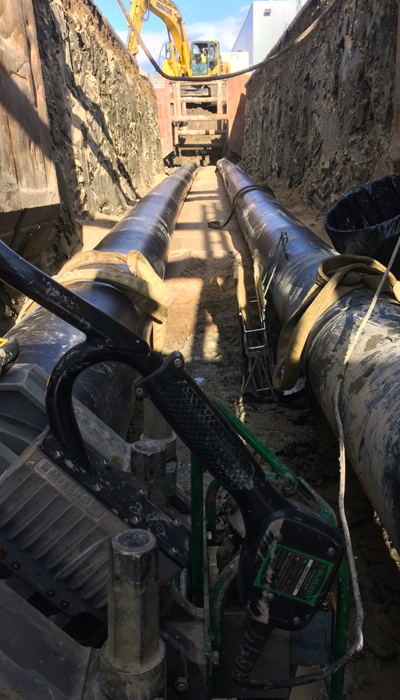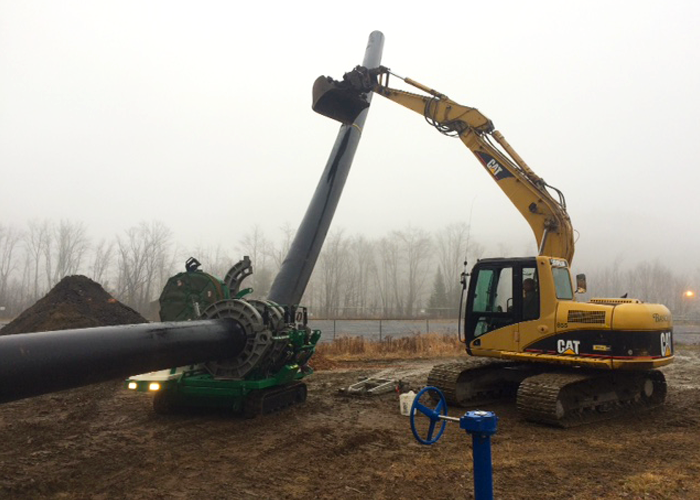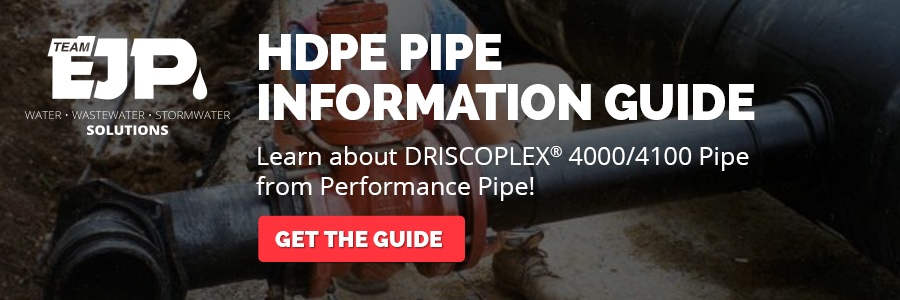Everything Your Water Utility Needs to Know About HDPE Piping
- Home
- Team EJP Blog
- Everything Your Water Utility Needs to Know About HDPE Piping
- Jul 17, 2017 11:00:04 AM
- Everett J. Prescott
When it comes to laying in lines for your water utility, there are many options available, but which one will work best? At Team EJP, we're pretty enthusiastic about the promise of HDPE pipe systems. But we realized that some of our clients aren't as familiar with this relatively new material as we are. We kept receiving a lot of questions about what it can or can't do, how do you install it and is it really the best option for your water utility, so we put together this quick reference to help you decide if it's a good match for your needs.
Engineering and Design Properties
One of the most appealing things about HDPE piping is how well it holds up in the environment:

Leakproof:
Because HDPE pipes are thermally fused together, they don't have any place to leak at connections. Studies have shown that 100% of burst HDPE pipes happen in the main body of the pipe, with no breaks at all at the fused connections.
Resistant to chemicals and erosion:
HDPE is a type of plastic, which means it doesn't corrode and is very resistant to extreme conditions in the environment. Problems like the Flint water crisis can't happen when your pipes aren't capable of leaching lead.
Flexible and resistant to fatigue:
We've all seen trenches that, well, weren't as straight as they should be. HDPE is flexible, making it a much more forgiving material in that situation. At the same time, it resists fatigue, so regular movement won't cause a weak point.
Lightweight but strong:
Want ease of installation without having to worry about impact breakage? HDPE is a great pipe material for this situation. Though it's lightweight, it's much tougher and significantly more impact resistant than PVC or similar plastic piping options.
Installation, Maintenance, and Repair of HDPE

Working on HDPE pipe brings you the best of both worlds. It's joined using thermal fusion, making a tight seal, while still remaining light weight and easy to maneuver. Unlike metal pipes which can corrode, leak and leach metals into the water being transported, HDPE holds up well to most soil and water conditions. This means fewer maintenance tasks and trips for your crew and more money left in the budget. It performs well under conditions where ductile iron, PVC and cement pipe won't work. Because of its flexibility, HDPE can be used for horizontal drilling, sliplining, plow and plant, floating or submerged pipe with no serious issues.
HDPE Cost Comparison
HDPE is a cost-effective, permanent solution for your water utility's pipe needs. Its current expected lifespan is conservatively estimated to be between 50-100 years by the Plastic Pipe Institute. Electrofusion fittings are available in sizes up to 12", while 2" or larger pipe is available in 50' straight sections and 3" and smaller pipe is available in coils up to 250-300', making line replacement a breeze, with fewer joins to make.
HDPE pipe is a versatile material that meets many of the demands regularly placed on it by water utilities across the country, and we hope that this guide has helped answer some of your questions. If you do have questions or would like a quote for your upcoming water utility needs, please feel free to contact the experts at Team EJP today for more information.








